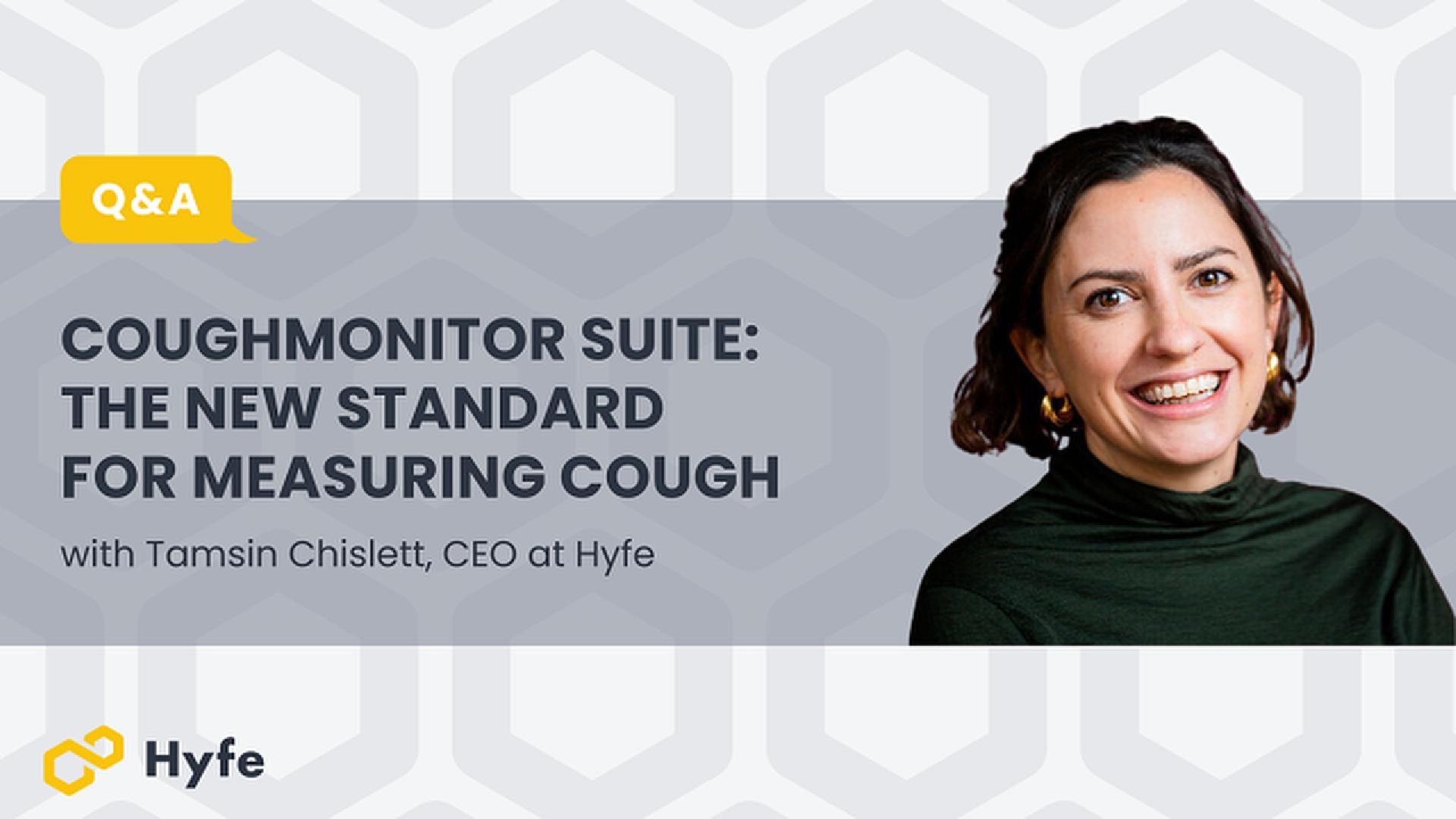Q&A with Actigraph Christine Guo, Chief Scientific Officer

Can you give us the background on the Hyfe / LEAP partnership and how it came about?
When we began the design phase for our LEAP device, we had to be strategic in deciding which sensors to integrate, including a clear use case for how they would be used. Medical grade multi-sensor wearables, especially wrist-worn devices, don’t typically include a microphone. We understood that some of the current digital cough counting technologies available on the market had significant limitations in terms of capability, battery life, storage constraints, and patient usability. Once the decision to include a microphone was finalized, we conducted a market evaluation of the various cough counting technologies available and we were impressed with the clinical validation work that Hyfe had already completed.
How challenging was integration? Were there technical issues to overcome?
Our focus was on developing a patient-centric tool that would prioritize privacy and battery life. The ActiGraph firmware engineering team worked closely with Hyfe to customize an approach that allowed the algorithm to work on the device, which means that ambient audio is never recorded or stored. We also collaborated to develop an approach that utilizes the processor on the LEAP device to analyze the sounds, which minimizes storage and transmission burdens that could be taxing on the battery and the storage space. We are anticipating 5-7 days of battery life for studies where Hyfe cough detection is deployed alongside our traditional accelerometer-derived measures of physical activity and sleep.
What's now possible on the LEAP in terms of data collection?
The FDA’s Patient Focused Drug Development Guidance's and their renewed focus on Patient Voice provide great context on how novel Digital Health Tools can be developed for respiratory conditions. The FDA’s Voice of the Patient report for Idiopathic Pulmonary Fibrosis, as one example, highlights cough and fatigue as two of the most significant symptoms for patients. The new LEAP+Hyfe solution allows researchers to better measure both symptoms together using one wearable solution.
Which disease areas are you seeing most interest from sponsors for "cough + x" data?
ActiGraph has extensive experience working in respiratory conditions, and we’ve had great engagement from drug developers who would like to add cough counts to their digital measures library in COPD and IPF. In certain cancers, cough is an important symptom for patients and this solution may provide a meaningful method of measuring the impact of cough on quality of life.
If you had unlimited funds, what's a research study you would do with Hyfe on the LEAP?
There are numerous areas where composite measures could provide a more meaningful measure of the patient experience. Cough, impaired sleep, reductions in physical activity are all important, but individual patients will likely experience those symptoms in combinations that are quite unique. A composite measure that aggregates all of these symptoms will require a lot of evidence generation. A large cohort study in a patient population that is severely impacted by cough symptoms, such as IPF, could have a meaningful impact on improving patient lives.
_______________________________________

Christine Guo leads ActiGraph’s clinical and data science team. She has over 15 years of clinical research experience and a passion for leveraging data and technology to improve people’s health. Prior to ActiGraph, Christine was Head of Scientific Innovation at Biogen Healthcare Solutions, leading the clinical development and validation of Biogen’s digital medicine products in multiple sclerosis, neuromuscular and neurodegenerative diseases.
Our latest news
Lorem ipsum dolor sit amet, consectetur adipiscing elit. Non eget pharetra nibh mi, neque, purus.




